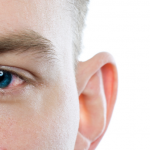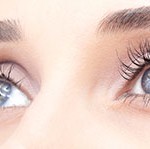Category: Eye Conditions
Protecting Your Eyes from Computer Strain
With upwards of 90% percent of people who use a computer screen for work experiencing symptoms of computer vision syndrome (which can include eye strain), it’s clear that kids and adults are having more vision pain and issues from computers, phones, and tablets than ever. Since using these electronics isn’t an option, management is critical. Here are... read more
Eye Conditions That Cause Headaches
Many things, such as stress, allergies, injuries, colds, and flu, can cause headaches. Eye conditions that cause headaches can include vision problems, computer vision syndrome, and common eye strain. Three types of headaches can involve the eyes: migraines, cluster headaches, and tension headaches. Migraines and cluster headaches are very painful and affect the eyes, but tension headaches... read more
Are You Experiencing Watery Eyes?
Watery eyes can be a common and bothersome condition affecting individuals of all ages. While tears are essential for maintaining eye health, an excessive or constant flow of moisture in the eyes can be indicative of an underlying issue. Keep reading as we explore the different reasons why someone may experience watery eyes and the potential... read more
Protect Your Eyes from Pterygium with These Tips
We don’t have to explain just how important of an organ your eyes are to your overall well-being and day-to-day life. Your ability to read these words right now is a fantastic thing. That’s what makes eye problems and conditions all the more concerning, as even the smallest issues can eventually become problems that inhibit... read more
Pink Eye: Should I See an Eye Doctor?
Have you ever woken up with itchy, red eyes that won't disappear? The discomfort and frustration are all too familiar for those who have experienced pink eye, also known as conjunctivitis. That nagging eye condition strikes at the most inconvenient times, like the day before a big meeting or a family vacation. But don't let... read more
There are lots of misconceptions about what causes conjunctivitis, which is more commonly referred to as pink eye. It’s a minor condition typically associated with affecting children and is known for being extremely contagious. There is some truth to both of those statements, but the reasoning behind why it happens is not as straightforward. The... read more
What is Keratoconus?
People have heard of most eye conditions, such as macular degeneration or glaucoma. But if you really want to stump people at a party ask them what “keratoconus” is. You’ll hear the sound of crickets. Keratoconus is a progressive eye disease where the person’s normally round cornea thins and then begins to bulge into a... read more
Amblyopia
Most people have heard of amblyopia, just not by that clinical name. You’ve probably heard it called “lazy eye.” This occurs when the vision in one of a child’s eyes doesn’t develop normally. It is caused when visual information is transmitted poorly or incorrectly between the optic nerve and the brain. If left untreated, amblyopia... read more
School’s Back. So Will Be Pink Eye.
We’re all glad that kids are back in actual school, rather than the Zoom variety. But if there’s one thing that is pretty much guaranteed with school, other than bad school lunch, it’s that kids will be sharing pink eye. Clinically known as conjunctivitis, pink eye isn’t really serious, but the dramatic pinkening of the... read more
Problems with the Retina
The retina is the layer at the back of the eye containing cells that are sensitive to light. These cells receive the light coming into the lens of the eye and nerve impulses then send that information to the brain via the optic nerve. The brain then interprets that information and forms the visual images... read more







